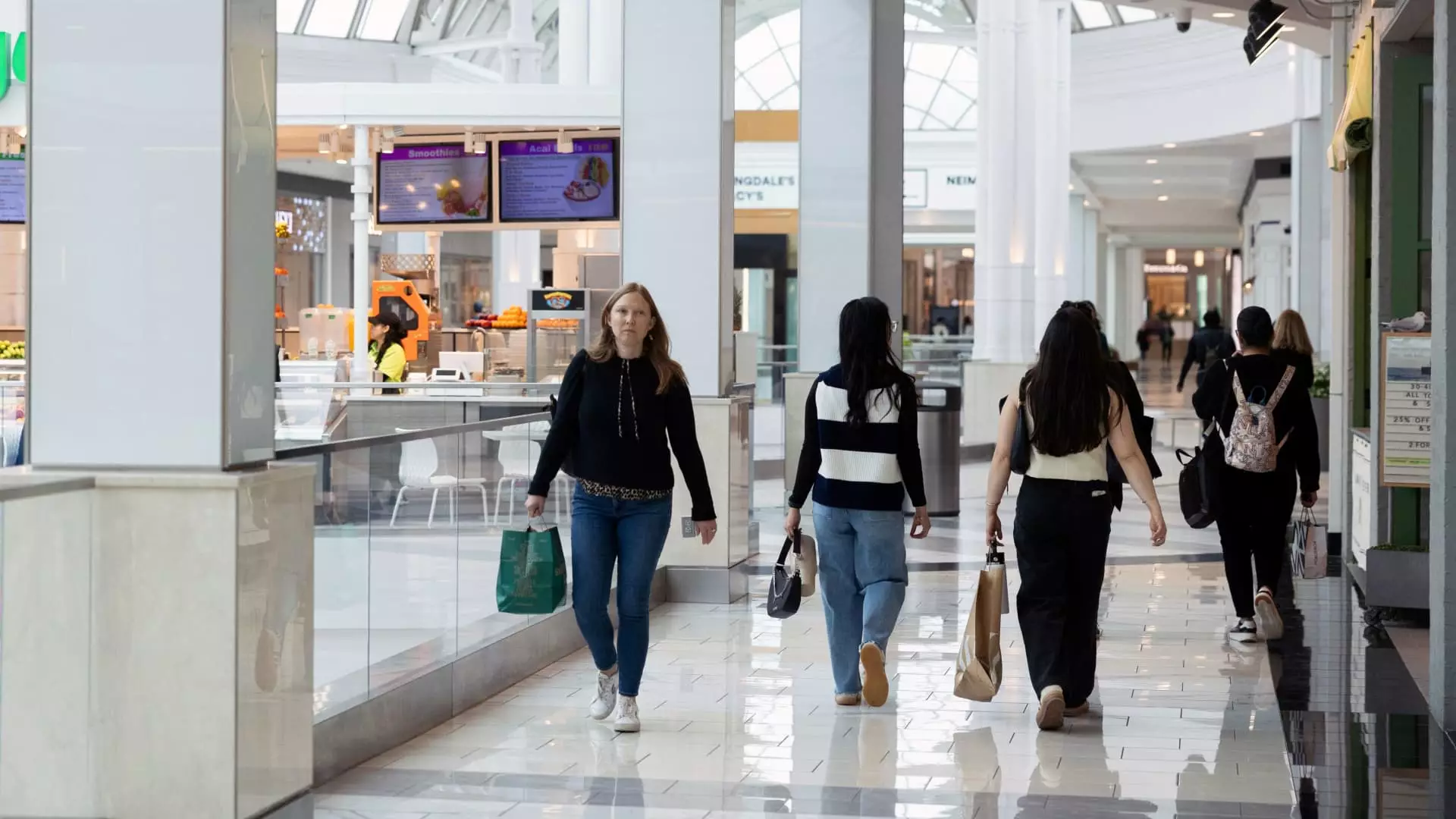As America navigates the early months of 2025, a troubling pattern emerges: the stark divergence between the spending behaviors of lower-income consumers and their wealthier counterparts. This duality presents a compelling narrative about the nation’s economic health and raises critical questions about future stability. Lower-income individuals are tightening their belts, focusing primarily on essentials, while affluent consumers continue to indulge in luxuries such as fine dining and extravagant travel experiences. This economic schism speaks volumes—not just about consumer confidence, but also about the growing inequality that threatens to define our economic landscape.
The recently reported data from U.S. credit card providers reinforces this narrative. As anxiety mounts over the implications of President Trump’s trade policies, a sense of foreboding permeates the economy. Investors and economists alike ponder whether these shifts in consumer sentiment are indicators of harsher realities waiting to unfold. Notwithstanding the gaiety expressed by credit card companies catering to the affluent, the narrative for those in lower income brackets has taken a more sobering turn.
Shifting Consumer Priorities
Recent statistics show a disconcerting trend among lower-income consumers. According to Synchrony, a key player in offering retail store cards, spending among low-income users declined by 4% in the first quarter of 2025. This stark drop contrasts sharply with reports from American Express and JPMorgan Chase, which, with their more affluent clientele, indicated a healthy increase in spending. Specifically, AmEx reported a staggering 7% escalation in dining expenditures and an impressive 11% surge in spending on premium airfare. The spending habits of the affluent starkly highlight an economy in which prosperity breeds a disconnect from the everyday struggles of the lower-income demographic.
As Synchrony’s CEO Brian Doubles aptly noted, “the consumer is still in pretty good shape,” indicating a resilient financial footing among many—but this resilience is highly selective. For those already walking the economic tightrope, the call for moderation persists. With inflation gnawing at their purchasing power, lower-income consumers are forced to reconsider discretionary spending as a practical necessity.
Debt and Financial Fragility
The recent surge in credit card debt among consumers is troubling. Data from the Federal Reserve Bank of Philadelphia reveals that the proportion of credit card users making only minimum payments soared to 11.1%, the highest it has been in twelve years. This statistic paints a grim picture of financial stability and raises concerns about potential defaults within this vulnerable demographic. It is all too clear that many Americans are living not just paycheck to paycheck, but also credit limit to credit limit.
Disparities in consumer behavior related to income brackets point to a larger systemic problem, one that cannot be ignored. The optimism expressed by banks specializing in services for high-income individuals stands in stark contrast to the apprehension felt by those at the lower end of the spectrum. Brian Foran, an analyst at Truist, accurately characterized this socioeconomic condition when he noted, “It’s fair to say that the high end has held up better, and the low end has pulled back more.” This sentiment is echoed across the board, revealing a consensus that economic fortune is far from equally distributed.
Future Implications of Current Trends
This dichotomy in consumer behavior, characterized by increasingly essential purchases by the lower class versus the indulgent spending of the affluent, raises critical concerns for future economic growth. Retail giants are now reporting that consumers are gravitating towards electronics, furniture, and automotive parts, raising a question about how sustained consumer spending can exist if people shy away from higher-priced goods and services. As Bread Financial’s CFO Perry Beberman highlighted, Americans are engaging in a thoughtful reevaluation of their purchases, which might not bode well for future discretionary spending.
The linkage between tariffs, inflation, and consumer spending patterns suggests that while some sectors may currently bask in prosperity, they may soon feel the chill of an economically divided America. As consumers brace themselves for higher prices, the trend of selective spending could render the economy vulnerable, diluting demand in sectors that traditionally fuel growth.
So, while the allure of consumer spending persists for those at the high end, one can’t ignore the cautionary tale unfolding among the economically strained. The deepening divide is not merely an economic issue; it symbolizes the fragmentation of the American dream itself. The stark realities of 2025 urge us to consider whose needs are being prioritized in an economy that seemingly favors the few over the many.

